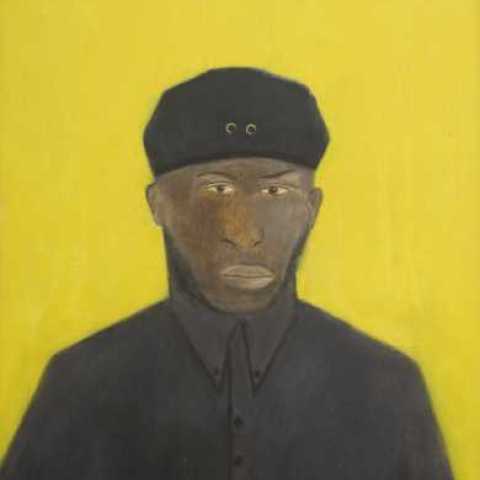Piano Nobile
Piano Nobile
129 Portland Road
London
W11 4LW
United Kingdom

For 26-year-old Craigie Aitchison, destined to become one of British art’s great colourists, 1952 was a turning point. Stepping away from his career in the law that had led him from Edinburgh to London, he enrolled at the Slade School of Fine Art, and in doing so joined an extraordinary cohort of students and tutors, many of whom exhibited at the Beaux Arts Gallery.
It was this year that he met a fellow student, Michael Andrews (1928-1995), who introduced Aitchison to Helen Lessore and her Beaux Arts Gallery in Bruton Street, where Aitchison had his first solo exhibition in 1959. He was in remarkable company: Andrews, Frank Auerbach (b.1931), Leon Kossoff (1926-2019) and Euan Uglow (1932-2000) each had their first solo exhibition at the Beaux Arts. While the early careers of all five artists were launched under Lessore’s discerning gaze, close friendships were formed, even as artistic styles diverged wildly. By the time it closed in 1965, the Beaux Arts Gallery had laid foundations for the next five decades of British art.
Craigie Aitchison and the Beaux Arts Generation focuses attention for the first time on Aitchison’s involvement in this remarkable set of post-war figure painters. Aitchison and his Beaux Arts contemporaries used the same drinking spots, visiting Muriel Belcher’s Colony Room Club, some even including portraits of each other in their paintings, and several contributed to the arts magazine X. While Aitchison, Andrews and Uglow knew each other from student days at the Slade, Auerbach and Kossoff by contrast came to the gallery from the Royal College of Art.
This exhibition makes the most of PIANO NOBILE’s recently opened second gallery at no. 96 Portland Road, Holland Park – directly opposite the gallery at no. 129. The new space will show a wide range of works by Aitchison, from the early 1950s to the 1990s. In the gallery across the street, a significant group of paintings and watercolours by Andrews will hang alongside nudes and still lifes by Uglow, and substantial early works by Auerbach and Kossoff.
Chronologically the twenty-eight paintings by Aitchison on show include Nude – Jackie Seated (1954), continuing through still lifes such as ‘Swan Vestas’ Still-life (1956), to major portraits including Georgeous Macauley in Blue against a Red Background (1965). Aitchison’s true range soon becomes clear with Pear Still-life (1971), the magnificent Dog in Red Painting (1975) and the Crucifixions from the 1980s, each offering a fresh account of the subject.
Across the street at PIANO NOBILE, 129 Portland Road, will hang works by the other featured Beaux Arts artists. Ten works on show by Michael Andrews include the glimpse through the trees of Regent’s Park (c. 1951-52), which has not been exhibited in public since Andrews’ retrospective at the Hayward Gallery in 1980. Another important early work is his Study for A Man who Suddenly Fell Over (1952), which was submitted as his Slade Diploma work in 1952 and was purchased by the Tate Gallery in 1958.
Leon Kossoff’s life-size charcoal drawing Young Man Seated (1961) depicts Helen Lessore’s son, John, an artist and teacher himself, who was a frequent presence at the Beaux Arts Gallery and the subject of its final exhibition in January 1965. Frank Auerbach’s 1955 painting Building Site near St Paul’s: Winter is a reminder of the scarred post-war cityscape they all traversed.
The importance of measurement in Euan Uglow’s practice can be seen already in his Study of a Cast, painted as a student at the Slade, which is one of two works by the artist from 1953, the other being Daisy in a Milk Bottle.
